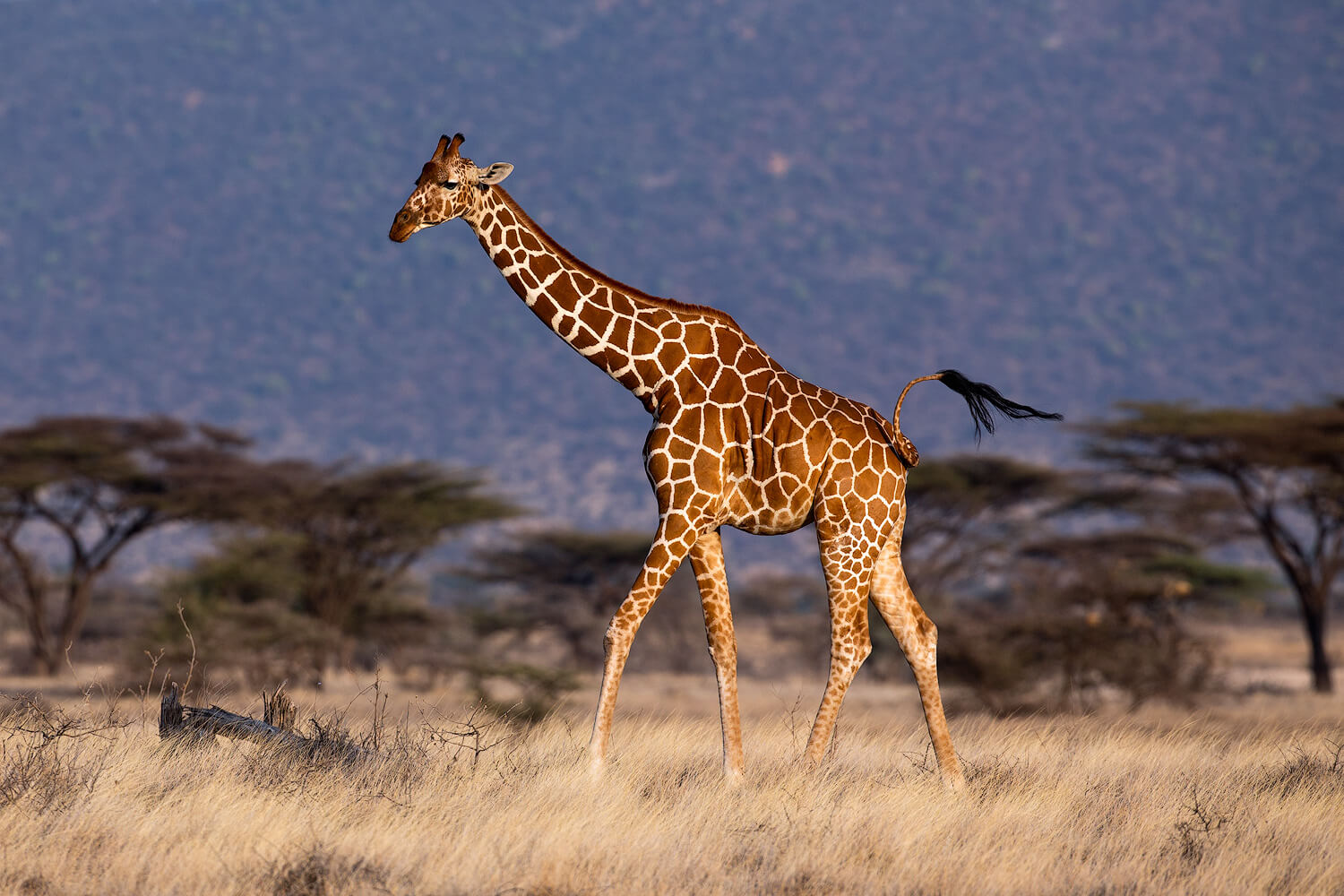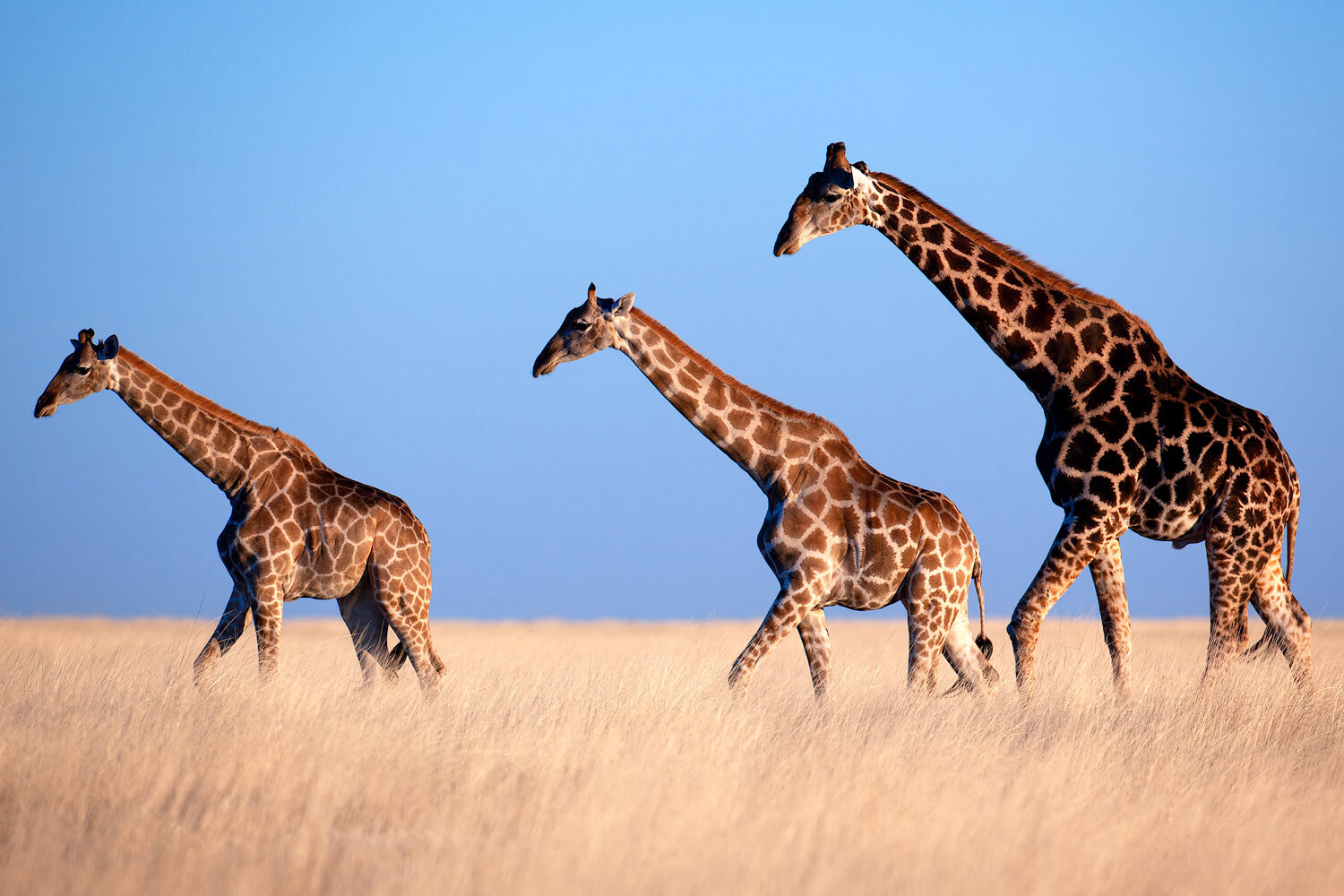Gene flow in giraffes and what it means for their conservation
Giraffes, with their bizarre body plan, have always held a special place in the minds of evolutionary biologists and non-experts alike. In a new study, led by a team of researchers from the University of Copenhagen, whole-genome sequencing data was used to investigate the evolutionary processes occurring within giraffes. In particular, the authors were interested in establishing whether different populations of giraffes really have been isolated from each other for extended periods of time, which is normally a requirement before new species can arise.

Giraffes are a beautiful and powerful example of what adaptive evolution can achieve. However, in recent years they have attained notoriety for a completely different reason: it has been suggested that instead of one giraffe species, there might be no fewer than four different species. Such dramatic taxonomic reappraisals in highly conspicuous and well-known “flagship” taxa are very unusual. The suggestion caused some uproar in the scientific community and received a lot of media attention. Much is at stake, because the way that most nature conservation works is focused on species, meaning that each species must receive its own dedicated conservation action plan and must be monitored individually. If we recognize four rather than one species of giraffe, it follows that each of them will have a lower population size and be more vulnerable to extinction, not only raising the conservation stakes considerably, but also the conservation costs.
Giraffes form four distinct, but not isolated lineages - and some are even hybrids
The results of the new study, published today in Current Biology, confirm that giraffes are highly genetically structured, which means that populations tend to become differentiated from each other rather easily. It also means that giraffes do appear to be separated into evolutionary lineages that are quite genetically distinct from each other. But there were also some big surprises:
- “When we started getting results from our analyses of gene flow between different giraffe lineages, we had to check twice.”, says Laura D. Bertola, one of the first authors on the study and postdoc at the Department of Biology. “The results showed not just a little gene flow here and there, but major hybridization events. For example, the reticulated giraffe, which occurs in Kenya, Ethiopia, and Somalia, appears to be the result of a 40%-60% mixture of an ancient northern lineage and an ancient southern lineage of giraffes, and therefore a hybrid. Today, the other descendants of these ancient northern and southern giraffes sit at either end of the giraffe tree and are highly genetically differentiated, but at some time in the past they evidently met and interbred, giving rise to the reticulated giraffe.”, says Laura.
The team also found historical gene flow among several other branches of the giraffe tree, and in fact there are so many gene flow events among giraffe lineages that the evolutionary history within giraffes resembles a “reticulated” network rather than a tree.
What this means for giraffes and their conservation
Biologists do not agree on what the best definition of species is, nor how to resolve at what stage two populations are sufficiently different that they belong to two different species. However, it is often assumed that extensive gene flow can only take place between populations that belong to the same, and not different, species. Therefore, the finding of widespread historical gene flow between giraffe lineages that are today highly genetically differentiated raises important doubts about whether or not high genetic differentiation is necessarily a sure sign of speciation, at least in giraffes.
- “Our findings touch on a very delicate matter in biology, namely that we do not have a universally agreed species concept. Therefore, it can be very difficult to settle how many species there are within a group”, says Rasmus Heller, Associate Professor at the Department of Biology and one of the senior authors on the study. “However, we show something more tangible which has so far been overlooked in evolutionary studies on giraffes: namely that giraffe lineages have had extensive gene flow among them. Giraffes seem to have retained their ability to interbreed freely, which they also still do in captivity. So, instead of solving how many species of giraffes there are, we prefer to highlight that gene flow has occurred pretty freely among even the most genetically differentiated lineages of giraffes, whenever conditions were right for this to happen”, explains Rasmus.
The study also concludes that regardless of the number of giraffe species, the different lineages are so genetically differentiated that they definitely deserve extensive protection in all parts of their range. If we want to protect biodiversity effectively, we cannot stop at the species level, but also need to look at the diversity within and between species.
- “Giraffes are such endlessly fascinating animals, and this study confirms just how much genetic variation there is even on small geographical scales. This provides a further incentive for conserving all the different lineages of giraffes, whether they be called species, subspecies, populations or whatever”, says Yoshan Moodley, a co-author of the study from the University of Venda in South Africa. “Studies that focus on the whole complexity of the evolutionary process are needed, instead of studies focusing on answering simplified binary questions such as whether or not there is one, four or dozens of species, whatever that may be”, says Yoshan.

The study is part of the African Wildlife Genomics research framework led by research groups at the Department of Biology at the University of Copenhagen. This research framework is an associated partner project of the African BioGenome Project - an African-led initiative to use genomics in the service of conservation and capacity building in Africa.
Find the article Current Biology
The study was supported by the Independent Research Fund Denmark, the Carlsberg Foundation, and other funding sources
Contact
Associate professor, Rasmus Heller
Department of Biology
Mail: rheller@bio.ku.dk
Mobile: +45 2929 9227
Sidsel Kretszchmer Henriksen
Science communicator
Department of Biology
Mail: sidsel.henriksen@bio.ku.dk
Mobile: +45 2970 7092
